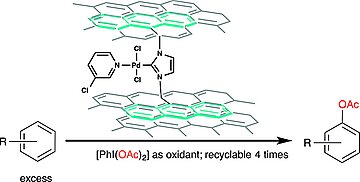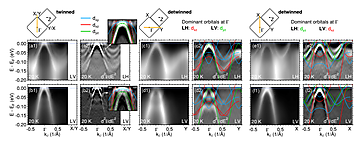Results
Scientists worldwide are pursuing their research with components, single instruments, and entire system solutions developed together and supplied by Scienta Omicron. Our expertise in thin film deposition, electron spectroscopy, and scanning probe microscopy allows tailoring solutions to the individual requirements. We are proud to be part of and supporting this worldwide network in generating a wealth of high quality research.
Check out our Result Finder
Result of the Month (ROM)
The Result of the Month (ROM) section is an institution with a long history. Our goal is to present remarkable and interesting measurements and/or papers done by our customers with Scienta Omicron systems and instruments to the scientific community.
Scientific Results
The Scientific Results are written by both internal and external scientists based on remarkable and interesting results and measurements done by Scienta Omicron systems and instruments. These Results offer product specifications, in-depth analysis and added information on measurements and instruments. Also, references to publications or Scienta Omicron users for further reading or information is found to promote papers and networking in the scientific community.
Publications
Electron-donating amine-interlayer induced n-type doping of polymer:nonfullerene blends for efficient narrowband near-infrared photo-detection
Inherently narrowband near-infrared organic photodetectors are highly desired for many applications, including biological imaging and surveillance. However, they suffer from a low photon-to-charge conversion efficiencies and utilize spectral narrowing techniques which strongly rely on the used material or on a nano-photonic device architecture. Here, we demonstrate a general and facile approach towards wavelength-selective near-infrared phtotodetection through intentionally n-doping 500–600 nm-thick nonfullerene blends. We show that an electron-donating amine-interlayer can induce n-doping, resulting in a localized electric field near the anode and selective collection of photo-generated carriers in this region. As only weakly absorbed photons reach this region, the devices have a narrowband response at wavelengths close to the absorption onset of the blends with a high spectral rejection ratio. These spectrally selective photodetectors exhibit zero-bias external quantum efficiencies of ~20–30% at wavelengths of 900–1100 nm, with a full-width-at-half-maximum of ≤50 nm, as well as detectivities of >1012 Jones.
A PdII Carbene Complex with Anthracene Side‐Arms for π‐Stacking on Reduced Graphene Oxide (rGO)
An N‐heterocyclic carbene palladium(II) complex containing two anthracene side arms was immobilised on the surface of reduced graphene oxide (rGO) by π‐stacking. The activity of the homogeneous analogue and the supported complex in undirected C–H acetoxylation reaction of arenes was studied. The results show that the catalytic efficiency in acetoxylation of benzene is improved in the immobilised materials compared to the homogeneous analogue. According to XPS analysis, the immobilised catalyst maintains the original oxidation state of PdII after the catalytic reaction.
Detailed Band Structure of Twinned and Detwinned BaFe2As2 Studied with Angle-Resolved Photoemission Spectroscopy
We study the band structure of twinned and detwinned BaFe2As2 using angle-resolved photoemission spectroscopy. The combination of measurements in the ordered and normal states along four high-symmetry momentum directions Γ/Z−X/Y enables us to identify the complex reconstructed band structure in the ordered state in great detail. We clearly observe the nematic splitting of the dxz and dyz orbitals as well as folding due to magnetic order with a wave vector of (π,π,π). We are able to assign all observed bands. In particular we suggest an assignment of the electron bands different from previous reports. The high-quality spectra allow us to achieve a comprehensive understanding of the band structure of BaFe2As2.





